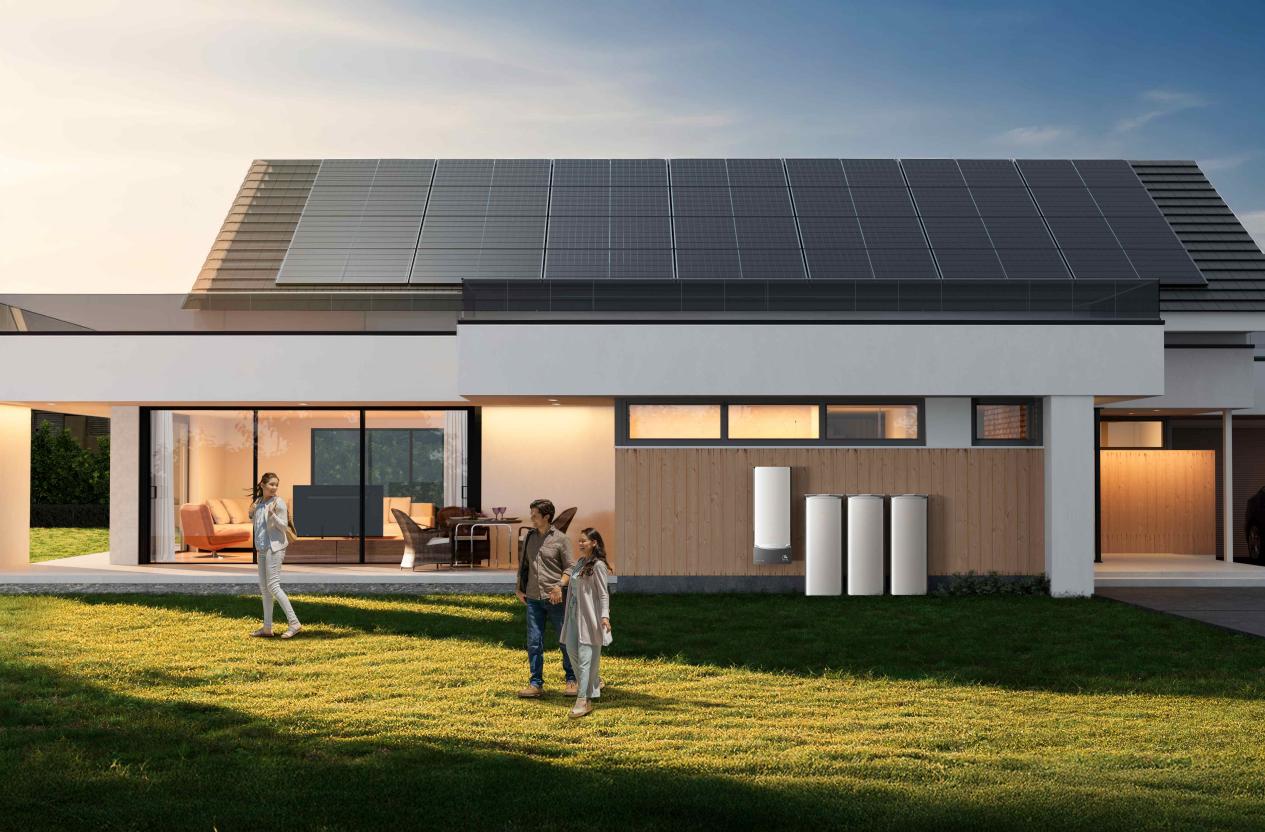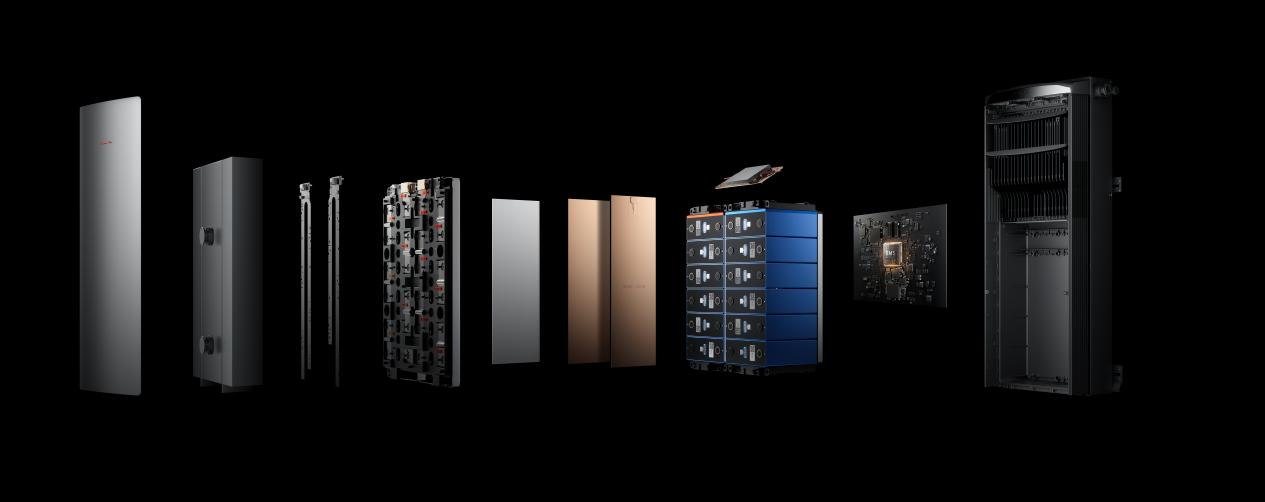Best Locations to Install Solar Batteries for Fire Safety
A solar battery gives a home energy independence. So, correct placement is the most critical first step in a safe solar battery system installation. The location is not just about convenience. It is an active safety feature that protects your home and family. The physical spot for a battery is the main safety measure a homeowner can control. A good location directly manages the environmental conditions that could start or stop a dangerous event.
Core Fire Risks of Home Batteries
To choose a safe location, it helps to know the main risks. A battery fire is not a single event. Instead, it is a chain reaction with several different dangers. Understanding these stages shows why good placement and airflow are so important.
The main concern is an event called thermal runaway. This is an uncontrolled overheating process. A battery cell generates more heat than it can release. Then, the heat can spread to other cells. The process can cause a fire or explosion. Also, during thermal runaway, batteries can release flammable gases. If these gases build up in a small space with no airflow, they can create an explosive atmosphere. A final danger is stranded energy. A damaged battery can still hold a charge even after a fire. This stored energy can cause the fire to start again hours or even days later.
Where to Install Solar Battery: Top Indoor Locations
After understanding the risks, we can look at good locations. Safe indoor placement has clear rules about what is allowed and what is not allowed. The goal is to keep the system away from living areas and give it a stable environment.
The Garage
The garage is the most recommended indoor location for a solar battery. Its usual design creates an almost perfect safety box for a battery system. A garage often meets many fire and electrical code rules without any changes.
Most garages have concrete floors and are built with materials that offer some fire resistance. This follows the safety rule of using surfaces that do not burn. A garage is also a non-living space. This separates the battery system from bedrooms and living areas. Garages are usually less sealed than the main house. This provides better natural airflow to help cool the battery. For extra safety, protective posts called bollards should be installed if the battery is in a vehicle's path.


Other Suitable Indoor Spots
Other areas like utility rooms and basements can also work. But these locations are only good under very specific conditions. They must be completely dry, have good airflow, and be free from extreme heat or moisture.
The safety of these other spots depends on the conditions. For example, a basement is a bad choice if it is damp because moisture can damage electrical parts. A utility room is not safe if the battery is placed near a furnace or water heater because the heat from these appliances can help the battery overheat. So, a professional on-site check is clearly needed. A trained installer can see these specific environmental problems that a homeowner might miss.
Areas You Must Absolutely Avoid
There is a clear list of indoor locations where a battery must never be installed. These rules are not random. Each one is a direct response to the specific risks of gas, fire, and blockage.
- Living Spaces: Never install a battery in bedrooms, kitchens, living rooms, or studies. This rule stops fire and smoke from spreading directly into the spaces where people live and sleep.
- Small Spaces: Avoid closets, spaces inside walls, and ceiling spaces. These areas have no airflow. Flammable gases could build up to dangerous levels in these spots.
- Escape Routes: Hallways, stairways, and any other escape routes must stay clear. A battery in these locations could block an escape path during an emergency.
Key Rules for Outdoor Solar Battery Installation
Outdoor installations are a good option, especially when indoor space is limited. But they require a stricter set of rules. The system needs protection from the weather, and the home needs protection from the system.
Weather Protection and Wall Materials
Equipment installed outside must be tough. Look for a product's IP Rating. IP stands for Ingress Protection. This rating tells you how well the unit is sealed against dust and water. A rating of IP67 is good for outdoor batteries.
The material of the wall where the battery is mounted also matters. A wall that does not burn, like brick or concrete, is best. If you have a wall that can burn, like wood siding, you may need to install an extra fire-resistant board between the battery and the house.
Understanding IP Ratings | |
First Digit (Solids) | Second Digit (Liquids) |
6 = Totally protected against dust. | 5 = Protected against low-pressure water jets. |
6 = Protected against powerful water jets. | |
7 = Protected against immersion up to 1 meter. |
Safe Clearances from Your Home
Specific clearances create a safety space around your home. This space is designed so that in a worst-case scenario, any dangerous gases go into the open air instead of your living space.
The battery must not be installed too close to windows, doors, or air vents. A common rule is a space of at least 3 feet from these openings. This distance stops any smoke or flammable gases from a problem from being pulled into the house. Windows and doors are direct paths into a home's air. For example, placing a battery directly under a bedroom window would create a serious danger. The clearance rules create a physical separation. This lets dangerous gases spread out and become harmless.
Shielding from Sun and Temperature Extremes
A battery's location is not just a safety decision. It is also a money decision. A battery is a large investment. Its health and lifespan are directly affected by its environment. Extreme temperatures can permanently damage a battery and shorten its useful life.
High temperatures, often above 86°F, speed up the chemical reactions inside the battery. This causes it to wear out faster. Cold temperatures, especially below 32°F, can reduce the battery's ability to give power. So, the best outdoor location is shaded and protected. A spot on a north-facing wall or under a wide roof edge is often best. Constant sun exposure is like choosing to shorten the battery's lifespan. Good placement is a simple action that protects the money value of the investment.


Do I Need Professional Help When Installing Home Batteries?
Some homeowners may wonder about doing the installation themselves. The answer is a clear yes, you need professional help. The risks of a bad installation are too serious. A professional approach handles both the technical dangers and the difficult parts of the process.
Fire safety is the main reason. A solar battery installation uses high-voltage direct current, also called DC electricity. This type of power is dangerous. It can make strong electrical sparks that are a big fire risk. It can also give you a bad shock. On top of the electrical dangers, the work must follow many rules from national and local codes, like the National Electrical Code (NEC) and NFPA 855. A certified pro knows these rules. Doing it yourself can also void the product warranties from the company.
Some people worry about long installation times or the trouble of finding a good contractor. A complete solution can fix these concerns. For example, the EcoFlow Ocean Pro is a product with advanced safety features built right into the battery. It includes a fire-prevention part and an explosion-proof valve. It also has a high IP67 rating. This means it is resistant to dust and can be put under water.
Also, the system is supported by a strong network of local, certified installers. This network solves the homeowner's worry about finding a good professional. These installers are trained to do safe, code-following work quickly and well. The simple process means many installations are finished in just a few days, not weeks. This mix of a safe product and a good installation service gives confidence from start to finish.
Final Checklist for a Safe Battery Location
Choosing the right spot for your battery is a team effort between you and your installer. This checklist sums up the key points. Use it to have a good conversation and to check that your installation follows the best methods. It is a tool to give you confidence in the safety of your system.
Cool & Dry Place: Is the location protected from direct sunlight, rain, and flooding?
Good Airflow: Is there plenty of space around the unit for air to move freely?
Safe Spaces: Is the spot away from living rooms, windows, doors, and escape routes?
Non-Burning Surface: Is the unit mounted on a fire-resistant wall or a concrete pad?
Easy to Reach for Service: Can the unit be reached easily for maintenance without anything in the way?
Installed by a Certified Pro: Is your installer licensed, insured, and certified for this kind of work?
The right location is the foundation of a safe solar battery system installation. This important decision protects your investment, your home, and your family. Always make the choice with help from a certified professional who knows the technology and the local safety codes.